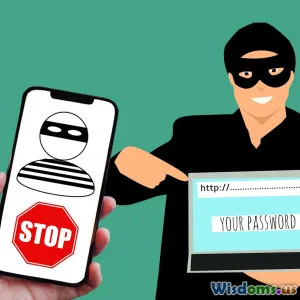
Five Everyday Examples of PKI in Action You Probably Missed
9 min read Discover five surprising everyday examples of PKI in action that enhance your digital security more than you realize. (0 Reviews)
Five Everyday Examples of PKI in Action You Probably Missed
Introduction
Security in today’s digital age is often thought of as complex technology hidden behind the scenes. Yet, one foundational system—Public Key Infrastructure (PKI)—works quietly but powerfully in the background of numerous daily activities without most of us realizing it. While many associate PKI primarily with web security and encrypted emails, its applications are much broader, spanning various everyday scenarios, from unlocking your smartphone to proving your identity at airports.
Imagine you’re logging into your favorite online retailer, sending a digitally signed contract, or even simply swiping your transport card – PKI is likely playing a key role in securing those transactions. Unpacking these examples reveals how widespread PKI is and why understanding it better offers insight into the invisible protections at work in our digital lives. This article shines a light on five everyday uses of PKI that you probably never noticed but rely upon every day.
1. Securing Your Email Communication
Email remains a dominant form of communication globally, and protecting its integrity is critical. PKI facilitates this protection primarily through the use of S/MIME (Secure/Multipurpose Internet Mail Extensions), which encrypts and digitally signs email messages.
How It Works:
- Each email user generates a unique key pair: a public key shared widely and a private key kept secret.
- When you send an email using S/MIME, your message is encrypted with the recipient’s public key, ensuring only they can decode it using their private key.
- Additionally, digital signatures confirm the sender’s identity and verify that the message hasn’t been altered.
Real-World Example:
Organizations handling sensitive information, such as financial institutions or healthcare providers, habitually implement PKI-enabled email encryption. According to a report by Radicati Group, over 4 billion business emails are sent every day worldwide, illustrating the immense scale at which PKI-based email security safeguards sensitive interactions.
Why It Matters: Protecting email communication helps prevent data breaches and phishing attacks, boosting overall digital trust.
2. The Magic Inside Your Smart Cards and Digital IDs
Smart cards – ranging from government-issued IDs to corporate access cards – harness PKI technologies to verify identity and authenticate users securely.
How It Works:
- Each smart card contains a microchip storing cryptographic keys and certificates.
- When you present your card for access verification, the system challenges it to prove ownership of the private key without revealing it, typically through a digital signature.
- This interaction confirms your identity securely, preventing unauthorized access even if the card is cloned.
Real-World Example:
E-passports incorporate PKI through biometric certificates stored on embedded chips, allowing border control systems worldwide to authenticate travelers safely and speed up verification.
According to the International Civil Aviation Organization (ICAO), as of 2023, over 150 countries issue e-passports employing PKI, showcasing the global trust in this technology for identity verification.
Why It Matters: Using PKI-enabled smart cards reduces identity theft risks and ensures secure access without exposing passwords.
3. Establishing Trust with HTTPS and SSL/TLS Certificates
Nearly 90% of web traffic is now encrypted using HTTPS—a security standard relying heavily on PKI to protect information you transmit online.
How It Works:
- Websites obtain digital certificates issued by trusted Certificate Authorities (CAs).
- When you connect, your browser verifies these certificates against known CAs to ensure the site is authentic.
- PKI enables encrypted communication sessions through SSL/TLS protocols, safeguarding sensitive data like passwords and credit card numbers from interception.
Real-World Example:
The shift to HTTPS is evident: Google's Transparency Report in 2023 noted that over 95% of pages loaded in their Chrome browser on both desktop and Android use encrypted connections—underpinned by PKI.
Why It Matters: Every secure website visit employing HTTPS relies on the robust trust mechanism PKI provides, ensuring your data stays private.
4. Code Signing for Software Integrity
Have you ever wondered how you can trust the software or app you download is legitimate and unaltered? Code signing, empowered by PKI, ensures the software’s authenticity and integrity before installation.
How It Works:
- Developers create a hash of their software and encrypt it using their private key, generating a digital signature.
- When you download and run the program, your system checks the signature against the public key embedded in a recognized certificate.
- If the software has been tampered with after signing, the signature won’t match, and warnings alert users.
Real-World Example:
Microsoft mandates that Windows drivers and apps be digitally signed to prevent malware and unauthorized code from being installed. Similarly, companies like Apple and Google use PKI-based code signing to secure apps in their stores.
Why It Matters: This use of PKI helps avoid malicious software spreading and protects the broader digital ecosystem.
5. Enabling Secure Mobile Payments and Contactless Transactions
The explosive growth in mobile payments, contactless credit cards, and digital wallets combines convenience with security, much of which depends on PKI.
How It Works:
- Payment devices use embedded secure elements containing certificate-based keys to authenticate transactions.
- When you tap your card or phone to pay, PKI ensures that the transaction data is encrypted and that the merchant’s terminal is legitimate.
Real-World Example:
Apple Pay, Google Pay, and contactless cards use tokenization supported by PKI, where real card details aren’t transmitted; instead, a unique token securely represents the payment credentials.
Mastercard reported in 2023 that contactless transactions increased by more than 40% year-over-year, indicating widespread and growing reliance on this secure channel.
Why It Matters: PKI enables trust in fast, frequently repeated transactions providing both convenience and security.
Conclusion
Public Key Infrastructure is no longer just a technical term — it’s an invisible guardian woven into the fabric of our digital lives. Whether you’re reading a secure email, crossing borders using an e-passport, surfing the internet safely via HTTPS, installing trusted software, or paying for your coffee with a tap, PKI underlies the trust mechanisms that keep these interactions secure.
Many of us rarely notice how PKI enhances cybersecurity day after day, but understanding its everyday impact illuminates why it’s a critical enabler of safe and trustworthy digital experiences. As digital reliance grows, awareness of PKI’s role can inspire confidence and vigilance about protecting personal and organizational information.
Next time you enter a password, receive a secured email, or browse a trusted site, remember the powerful PKI ecosystem silently safeguarding your digital world every second.
References
- Radicati Group, "Email Statistics Report, 2023-2027 Edition".
- International Civil Aviation Organization (ICAO), e-Passport Implementation Status.
- Google Transparency Report: HTTPS encryption data.
- Microsoft Documentation on Code Signing.
- Mastercard Quarterly Payment Report, 2023.
Rate the Post
User Reviews
Popular Posts




















